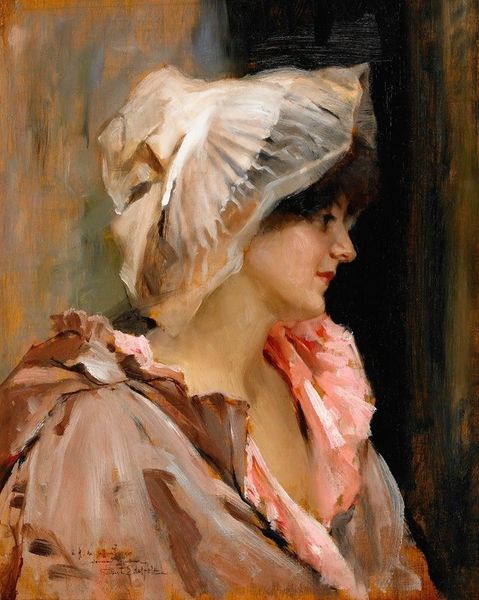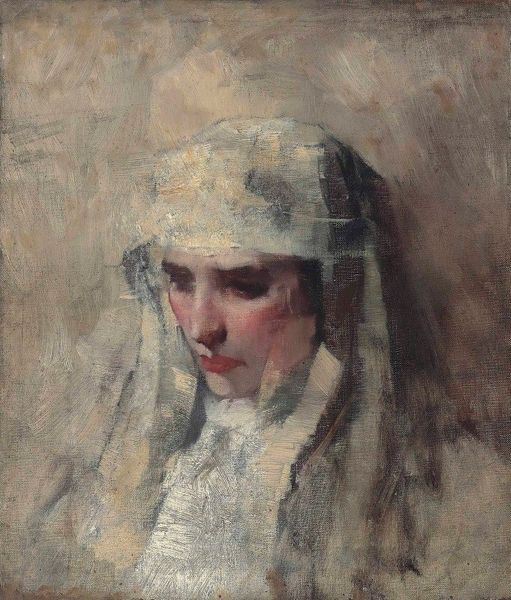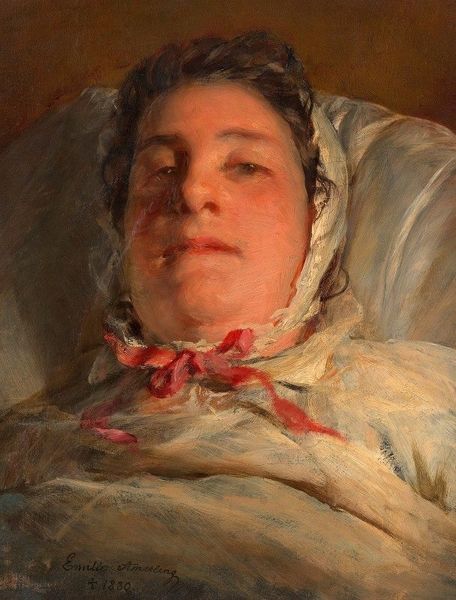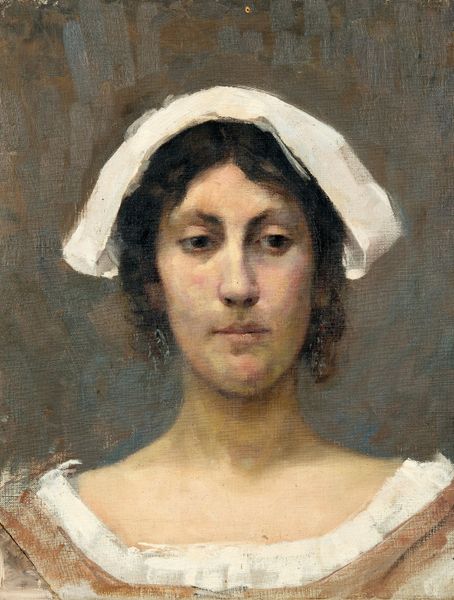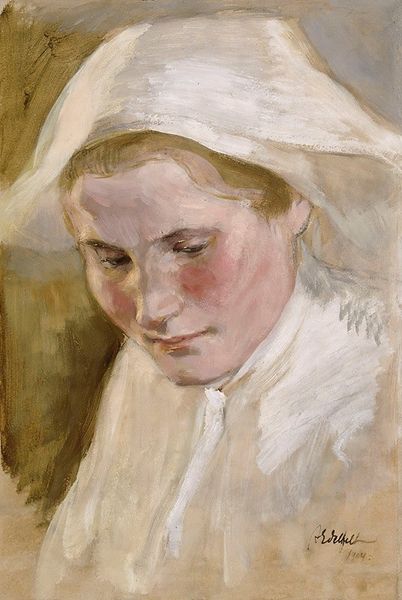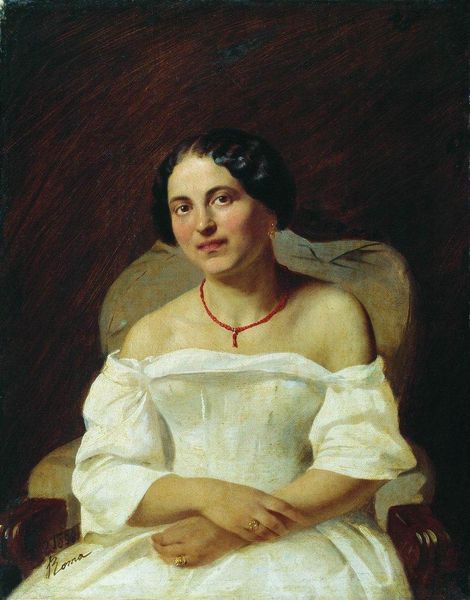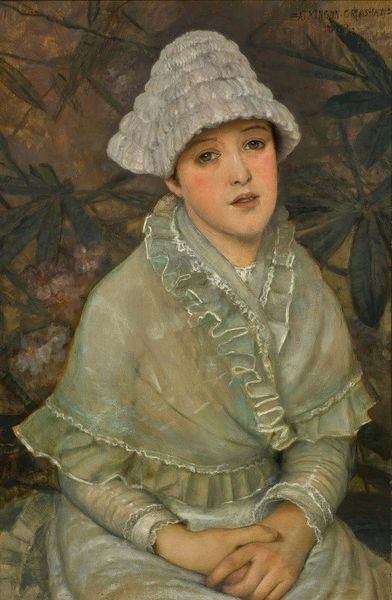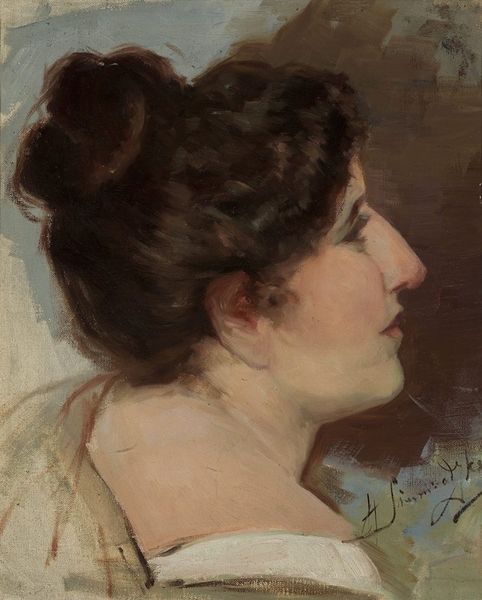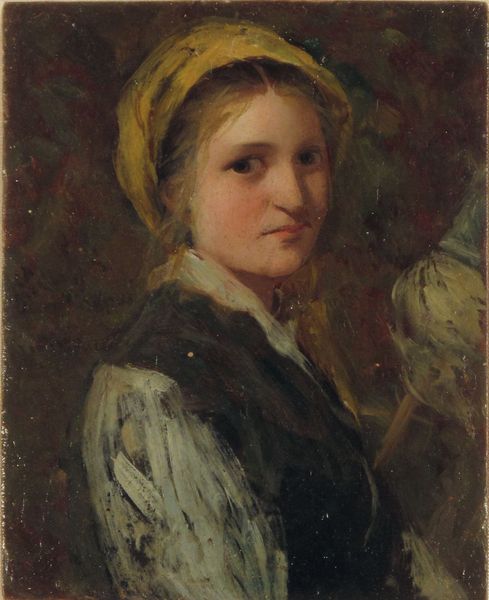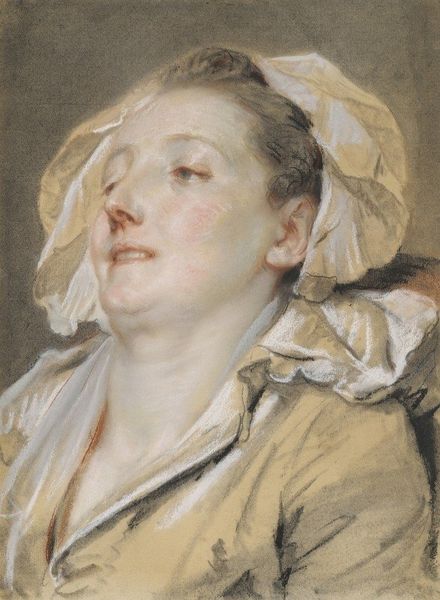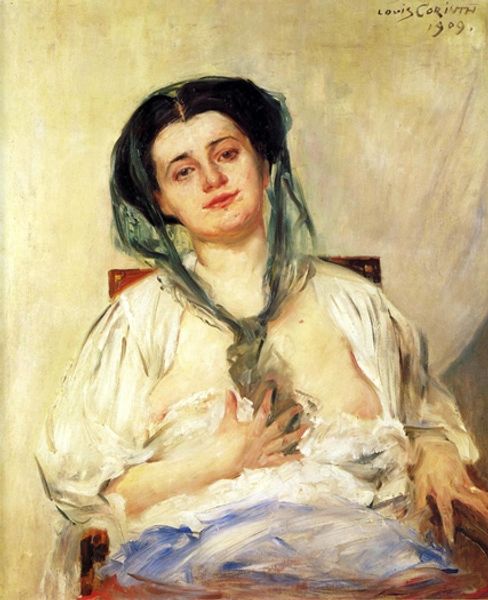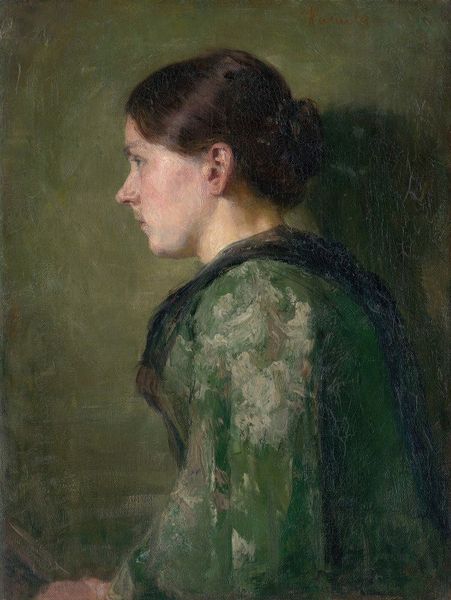
painting
#
portrait
#
figurative
#
character portrait
#
painting
#
portrait reference
#
portrait head and shoulder
#
romanticism
#
animal drawing portrait
#
portrait drawing
#
facial portrait
#
portrait art
#
fine art portrait
#
realism
#
celebrity portrait
#
digital portrait
Copyright: Public Domain: Artvee
Curator: It's arresting, isn’t it? This piece is titled "Antonie Amerling am Krankenbett," which translates to "Antonie Amerling on her sickbed," completed in 1843 by Friedrich von Amerling. Editor: Yes, arresting. Immediately, I'm struck by the visible brushstrokes and the way the materiality of the paint lends such an emotional weight to this portrait. There’s almost a raw honesty in the presentation of her illness. Curator: Absolutely. If we delve into the social and historical backdrop of this work, we understand that portrayals of illness during the 19th century carried significant symbolic weight, particularly for women. The invalid woman becomes this culturally resonant figure of passivity, suffering, and almost…spiritual transcendence. Editor: The textile, though... That fine lace of her bonnet and the palpable weight of the bed linens. Look how they interact with the light; you can almost feel the texture. How do these materials amplify the story? Curator: The soft textures definitely underscore vulnerability, but also wealth, right? Access to these materials, to leisure, signals class privilege which often defined the perceived experience of sickness. Illness and gender, of course, intertwine. What narratives emerge about female bodies, their weaknesses and strengths in the social sphere of this time? Editor: So, you see those fabrics as instruments reinforcing social stratification... For me, I think it speaks to a more intimate sphere: domestic labor. Think of all of the unseen hands involved in processing, weaving, laundering. These were things she relied upon, literally to exist as her material conditions, so she might recline comfortably like that. Curator: That's a powerful point. The domestic becomes integral to the act of observing this intimate moment of vulnerability. It shifts our gaze. It complicates what a passive scene actually conveys. Editor: In seeing those unseen laborers and appreciating the textile work that goes into this piece, her image reminds me that the story is larger than herself. Everything about what is seen here had to be created, constructed and considered, far before its capture onto a single piece of canvas. Curator: Yes! This kind of critical approach offers so much more than just considering one woman's story. Editor: Definitely makes you wonder about who has historically done art labor.
Comments
No comments
Be the first to comment and join the conversation on the ultimate creative platform.
